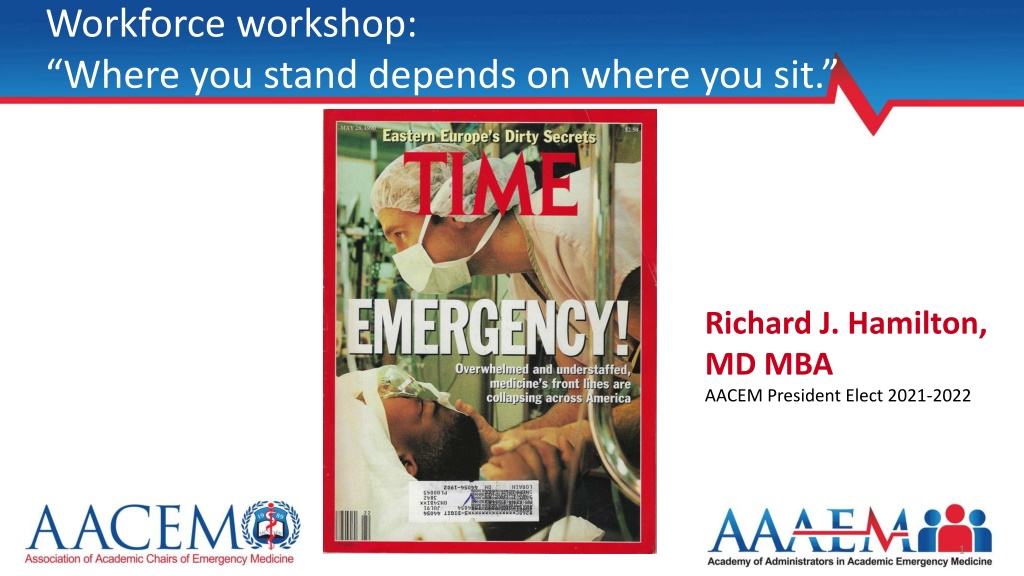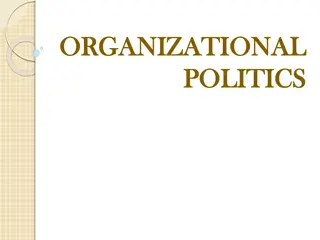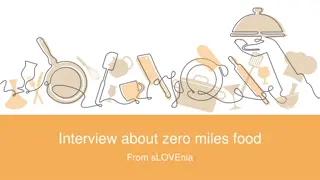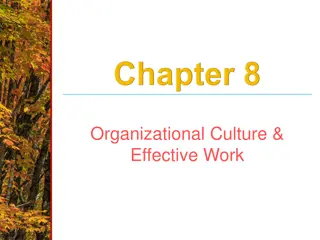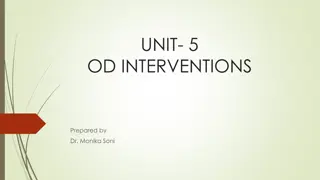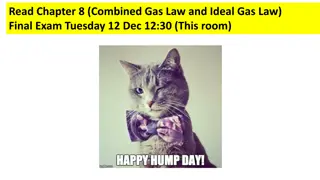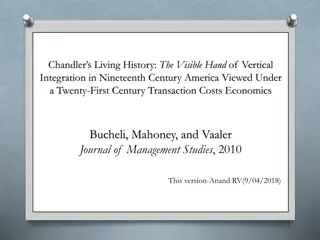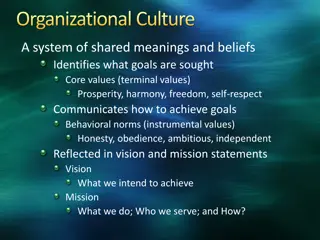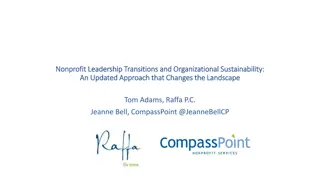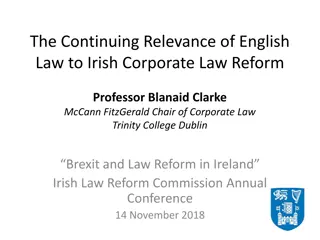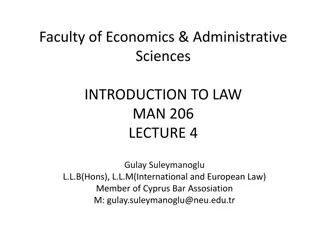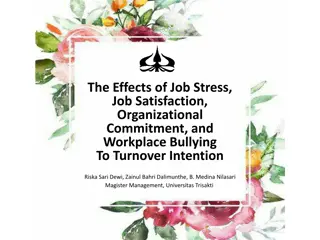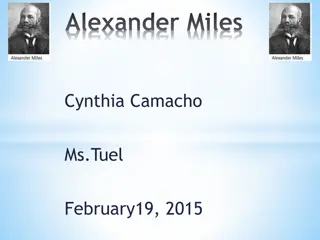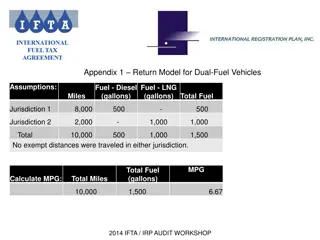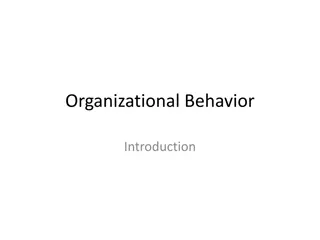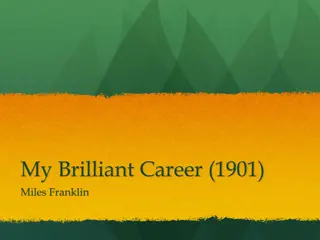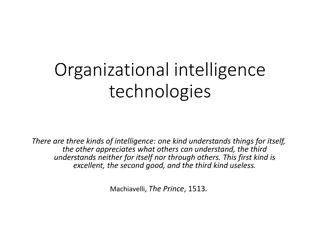Understanding Miles Law in Organizational Dynamics
Miles Law emphasizes that individuals' perspectives and actions are influenced by their positions within an organization. This phenomenon can lead to suboptimal outcomes as personal and organizational interests may conflict. The concept highlights the importance of considering where one stands to align goals effectively and achieve better results in decision-making processes.
Uploaded on Sep 18, 2024 | 0 Views
Download Presentation

Please find below an Image/Link to download the presentation.
The content on the website is provided AS IS for your information and personal use only. It may not be sold, licensed, or shared on other websites without obtaining consent from the author. Download presentation by click this link. If you encounter any issues during the download, it is possible that the publisher has removed the file from their server.
E N D
Presentation Transcript
Workforce workshop: Where you stand depends on where you sit. Richard J. Hamilton, MD MBA AACEM President Elect 2021-2022 9/18/2024 1 1
Miles Law Where you stand depends on where you sit. Originated with Rufus Miles (1910-1996): Chief of the Labor and Welfare Branch of the Bureau of the Budget Noted that individuals who argued for budgets increases when they were running Government Agencies typically switched to arguing for budget cuts when working in the Bureau of Budget Be forewarned: Miles Law is also seen when Chairs become Deans, Vice Chairs become Chairs etc 9/18/2024 2 2
Miles Law leads to suboptimal outcomes Individuals choose strategies and policy goals based on different ideas of which outcomes will best serve their organizational and personal interests. Bargaining: pluralist process of give-and-take reflects the prevailing rules of the game and power relations among the participants. Process: Factions Predominate (Balkanization) Tends not to be objective Lacks strictly rational decision making with respect to the wellbeing of entire enterprise Results: suboptimal outcomes that fail to fulfill the objectives of any of the individual participants. 9/18/2024 3 3
Departments, Chairs, Program Directors, and Division heads have diverse personal and organizational interests 9/18/2024 4 4
Our objective Miles Law 9/18/2024 5 5
So where do I sit? 1998 Bankruptcy of Allegheny University Health Sciences 2005 - Closure of Medical College of Pennsylvania Hospital 2019 - Closure of Hahnemann University Hospital six month termination notice 9/18/2024 6 6
So where do I sit? 1998 - Bankruptcy of Allegheny University Health Sciences 2005 - Closure of Medical College of Pennsylvania Hospital 2019 - Closure of Hahnemann University Hospital 2020 Academic Chair of EM and Associate Dean for Drexel for Crozer Regional Campus (Drexel) EM System Chair for Crozer Health System (TeamHealth) 9/18/2024 7 7
As you answer these questions together, consider Aristotle s classification of knowledge Techne (Knowledge of Craft) Know How Episteme (Scientific Knowledge) Evidence Phronesis (Ethical Knowledge) Practical wisdom to make ethical judgements 9/18/2024 8 8
Im worried that my Dept will struggle with the workforce recommendation for The ACEP Workforce considered several recommendations. Some examples: 25% of Core Faculty are Fellowship Trained Increase procedure requirements for Ultrasound, US Guided Regional Blocks, chest tubes, intubations Scale Residency Size (up or down) based on patient volume increase scholarly output and research Each Chair at the table must consider where their department would struggle to adopt recommendations DISCUSS THIS WITH THE OTHER CHAIRS AND ADMINISTRATORS. How do the obstacles your fellow Chairs would face change/reshape your opinion about that workforce recommendations? 9/18/2024 9 9
Start a new program or expand? The President of your HealthCare System wants to meet with you to discuss the recent acquisition of a large Community Hospital system. The system has sufficient resources and setting to meet the requirements of a new EM Residency. The President wants to start a new program or expand your current EM Residency into the site. The President asks you to develop a plan. How do you respond? 9/18/2024 10 10
Would you expand your residency? Yes No Way! Can I get back to you on that? Yes but 9/18/2024 11 11
Does knowing that the President is discussing the situation with an outside group (e.g. CMG) change your response? Answer is still yes need to outcompete Answer is still no give it to the CMG they can have it. Can I get back to you on that? Yes but you need to fund my research program too 9/18/2024 12 12
New roles and unfunded mandates The ACEP Workforce recommendations seem to place a high reliance on simulation for education needs and also asks each residency to have a Research Director. At the same time, the ACGME and the EM RRC don t acknowledge either of these roles in the administration of the program. What are the implications of these recommendations for residencies of various sizes (small to large, rural to urban, academic to community) and what should be AACEM s approach to inform/educate the ACGME and EM RRC about these unrecognized roles? 9/18/2024 13 13
Conclusion 9/18/2024 14 14
